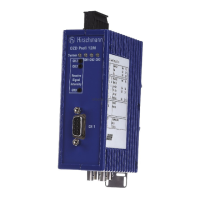32
Installation OZD Profi 12M ...
Release
01
07/2017
3 Installation guidelines
3.1 Electromagnetic compatibility (EMC)
Electromagnetic compatibility (EMC) covers all aspects regarding the effects
of radiated and received electrical, magnetic, and electromagnetic
emissions. In order to prevent interference in electrical systems, these
effects must be reduced to a minimum. The structural design and correct
connection of bus lines as well as the interference suppression of switched
inductances play a major role in limiting interference.
3.2 Interference suppression of switched
inductances
Figure 4: Interference suppression of fluorescent lamps in cabinet
3.2.1 Suppressing switched inductances with fuses
Switching inductances, e.g. in relays and fans, generates interference
voltages which are many times higher than the switched operating voltage.
These interference voltages can affect electronic devices. The interference
voltages of inductances must be limited at their source of emission by means
of fuses (by connecting diodes or RC elements). Only use interference
suppressors which are intended for the used relays and fans.
3.2.2 Cabinet lighting
Use filament lamps (e.g. LINESTRA lamps) for the cabinet lighting.
Do not use fluorescent lamps because they generate interference fields.
If the use of fluorescent lamps cannot be avoided, the interference
suppression measures shown in Fig. 4 must be implemented.

